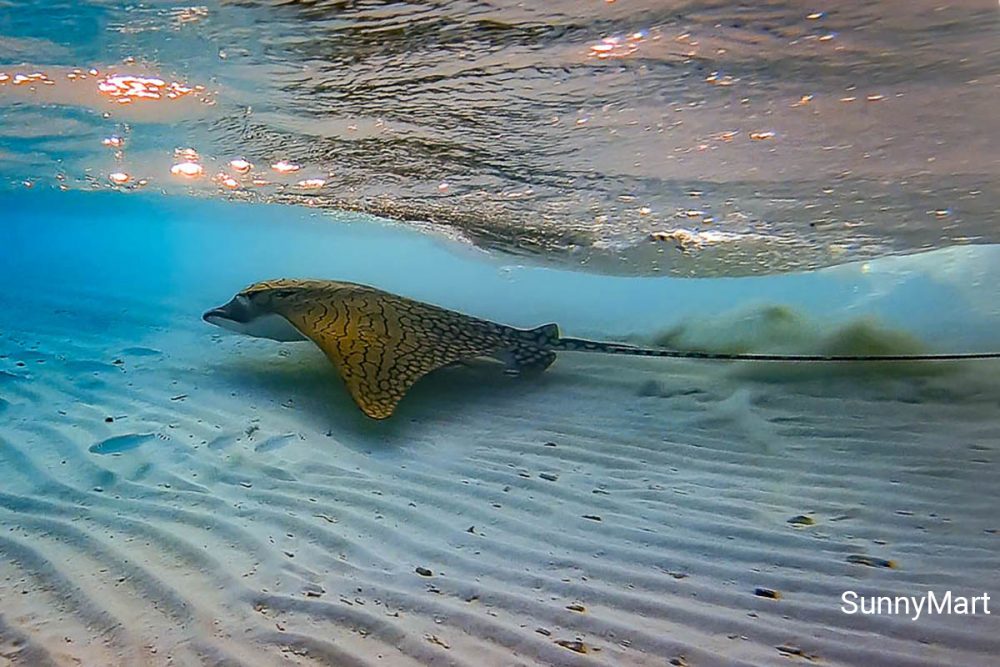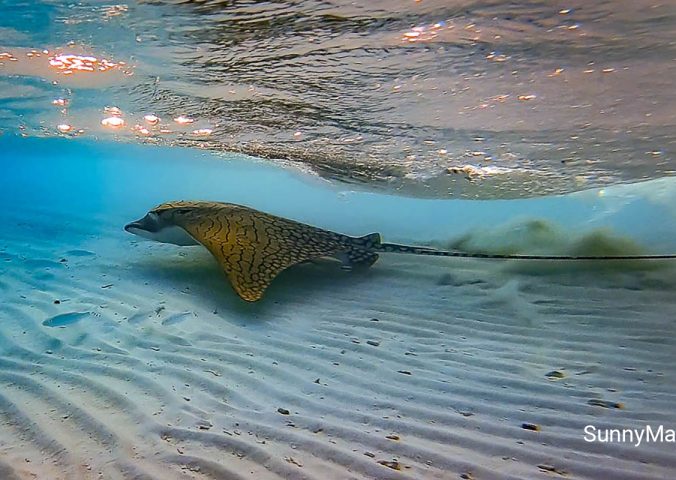About
The largest of the three species in the genus, the ornate eagle ray is an uncommon ray that has not been seen in great numbers since the species was described in 1852.
The ornate eagle ray is one of the few eagle ray species without a stinging barb. They are strong swimmers, known to breach several meters out of the water.
The ornate eagle ray is oviviviparous, where the embryos are kept inside the female until they hatch and are released as young; producing between 4 and 6 live young per breeding cycle. This type of reproduction makes the species highly susceptible to fisheries, in an area where fishing pressure is one of the highest in the world.
The main threat to this species is the inshore demersal fisheries which operate throughout its range. Despite not being seen in large numbers, the species is conspicuous in fish markets and landings in India. The ornate eagle ray is utilized for its meat and cartilage and is considered to be of medium commercial value.
Currently there are no conservation actions in place for the species.
- Order: Myliobatiformes
- Family: Myliobatidae
- Population: Unknown
- Trend: decreasing
- Size: Up to 240 cm (?)
- Depth Range (m): Up to 110m
EDGE Score
Distribution
Spotted distribution across the Tropical Indo-West Pacific; Mozambique, the Red Sea, India, the Maldives, Southeast Asia and the Philippines, China and Taiwan, and across northern Australia.
Habitat and Ecology
The ornate eagle ray is found on muddy bays and banks as well as on coral reefs. Local site fidelity, local and regional movements are unknown.
Scientists believe they occur on the inner continental shelf to depths of 110m, feeding mainly on snails, mussels and crustaceans, using their hard teeth to crush the shells.

